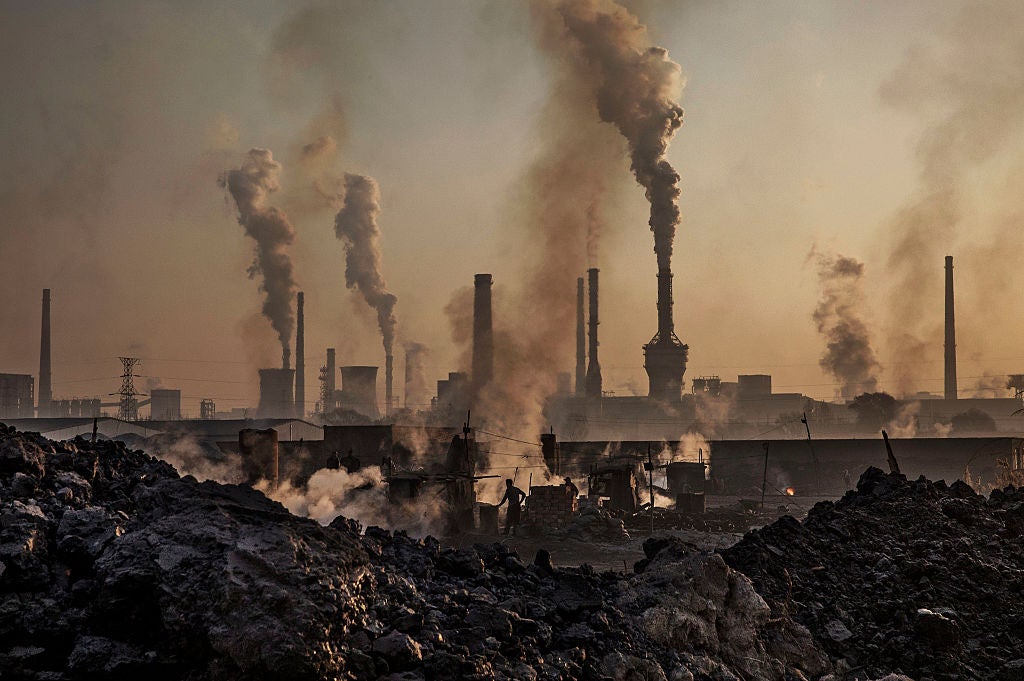Carbon dioxide levels in Earth's atmosphere reach 'highest level in 800,000 years'
Levels exceed average of 410 parts per million across an entire month for the first time

The concentration of carbon dioxide in the atmosphere has reached its highest level in at least 800,000 years, according to scientists.
In April, CO2 concentration in the atmosphere exceeded an average of 410 parts per million (ppm) across the entire month, according to readings from the Mauna Loa Observatory in Hawaii.
This is the first time in the history of the observatory’s readings that a monthly average has exceeded that level.
The Scripps Institution of Oceanography said that before the Industrial Revolution, carbon dioxide levels did not exceed 300ppm in the last 800,000 years.
The Keeling Curve, which plots the concentration of carbon dioxide in the atmosphere, shows a steady rise in CO2 levels in the atmosphere for decades.
Scientists have warned levels of carbon dioxide are crossing a threshold which could lead to global warming beyond the “safe” level identified by the international community, fuelling a rise in sea levels.
Carbon dioxide is the single most important greenhouse gas emitted by human activities including the burning of fossil fuels, such as coal and oil, the making of cement and deforestation.
It remains in the atmosphere for tens of thousands of years, trapping heat from solar radiation and driving climate change.
The latest reading shows a 30 per cent increase in carbon dioxide concentration in the global atmosphere since recording began in 1958. The first measurement was recorded as 315ppm.
Carbon dioxide concentration exceeded 400ppm for the first time in 2013.
Prior to 1800, atmospheric CO2 averaged about 280ppm, which demonstrates the effect of manmade emissions since the industrial revolution.
Scientists believe that the world has never experienced a rise in CO2 levels as quick or intense as this.
Last year, the World Meteorological Organisation said: “Today’s CO2 concentration of around 400ppm exceeds the natural variability seen over hundreds of thousands of years.”
Ralph Keeling, director of the CO2 programme at the Scripps Institution of Oceanography which monitors the readings, told the The Washington Post the rate of CO2 concentration in the atmosphere has been increasing faster in the last decade than in the 2000s.
“It’s another milestone in the upward increase in CO2 over time. It’s up closer to some targets we don’t really want to get to, like getting over 450 or 500 ppm.
That’s pretty much dangerous territory,” he said.
Following the news of the Mauna Loa Observatory’s reading, climate scientist Katharine Hayhoe tweeted: “As a scientist, what concerns me the most is what this continued rise actually means: that we are continuing full speed ahead with an unprecedented experiment with our planet, the only home we have.”
The last time carbon dioxide levels reached 400ppm was 3-5 million years ago, in the mid-Pliocene era.
“During that period, global mean surface temperatures were two degrees warmer than today, ice sheets in Greenland and West Antarctica melted and even parts of East Antarctica’s ice retreated, causing the sea level to rise 10-20m higher than that today,” the WMO said.
Join our commenting forum
Join thought-provoking conversations, follow other Independent readers and see their replies
Comments
Bookmark popover
Removed from bookmarks